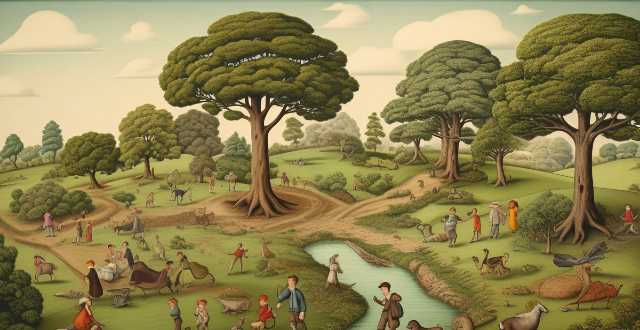This essay discusses how climate change affects marginalized communities, including low-income populations, indigenous people, and residents of coastal areas. It explains why these communities are more vulnerable to the effects of climate change and provides examples of how they are affected. The essay concludes that addressing these disparities requires targeted interventions that prioritize the protection and empowerment of marginalized communities.

How Climate Change Disproportionately Affects Marginalized Communities
Climate change is a global phenomenon that affects all living beings on Earth. However, its impact is not distributed evenly across different communities. Marginalized communities, such as low-income populations, indigenous people, and residents of coastal areas, often bear a disproportionate burden of the consequences of climate change. This essay will explore how climate change affects these marginalized communities and why they are more vulnerable to its effects.
Low-Income Populations
Low-income populations are particularly vulnerable to the effects of climate change due to their limited resources and lack of access to adequate infrastructure. They often live in areas that are more susceptible to natural disasters, such as floods, hurricanes, and wildfires. These communities also have less capacity to cope with the economic costs associated with climate change, such as increased food prices and healthcare expenses.
Examples of How Low-Income Populations Are Affected by Climate Change:
- Increased Exposure to Natural Disasters: Low-income communities are often located in areas that are more prone to natural disasters, such as flood zones or areas affected by wildfires. This exposure puts them at greater risk of property damage, displacement, and loss of life.
- Limited Access to Resources: Low-income populations may not have the financial resources to adapt to changing climate conditions, such as installing air conditioning units or purchasing drought-resistant crops. This lack of access to resources can exacerbate the negative impacts of climate change on their health and well-being.
- Economic Hardship: Climate change can lead to job losses in industries that rely on natural resources, such as fishing and agriculture. Low-income populations are often employed in these industries and may struggle to find alternative sources of income if their livelihoods are threatened by climate change.
Indigenous People
Indigenous people are among the most vulnerable groups to the effects of climate change due to their reliance on traditional knowledge and practices that are closely tied to the environment. Many indigenous communities depend on natural resources for their survival, such as hunting, fishing, and gathering wild foods. Climate change threatens these resources and disrupts the cultural practices that are essential to their way of life.
Examples of How Indigenous People Are Affected by Climate Change:
- Loss of Traditional Knowledge: As the climate changes, indigenous communities may lose access to the natural resources that are integral to their traditional knowledge and practices. This loss can have profound cultural implications and threaten the survival of their way of life.
- Displacement and Relocation: Rising sea levels and other climate-related events can force indigenous communities to relocate from their ancestral lands. This displacement can cause significant emotional distress and disrupt social networks and cultural practices.
- Health Risks: Indigenous communities often face higher rates of chronic diseases, such as diabetes and heart disease, which can be exacerbated by climate change. Extreme weather events can also increase the risk of infectious diseases spreading within these communities.
Residents of Coastal Areas
Residents of coastal areas are particularly vulnerable to the effects of climate change due to rising sea levels and increased frequency and intensity of storms. These communities face threats such as flooding, erosion, and saltwater intrusion, which can damage infrastructure, contaminate drinking water supplies, and disrupt local ecosystems.
Examples of How Residents of Coastal Areas Are Affected by Climate Change:
- Property Damage and Loss: Flooding and storm surges can cause significant damage to homes and other structures in coastal areas. This damage can be costly to repair or replace, putting financial strain on affected households.
- Disruption of Ecosystems: Rising sea levels can lead to saltwater intrusion into freshwater sources, which can harm local ecosystems and affect the availability of fish and other marine resources that are important for coastal economies.
- Health Risks: Flooding and storms can increase the risk of waterborne illnesses, such as cholera and dysentery. These health risks can be particularly severe for low-income populations who may not have access to adequate sanitation facilities or healthcare services.
In conclusion, climate change disproportionately affects marginalized communities due to their limited resources, reliance on natural resources for survival, and exposure to natural disasters. Addressing these disparities requires targeted interventions that take into account the unique needs and vulnerabilities of these communities. It is crucial for policymakers and stakeholders to prioritize the protection and empowerment of marginalized communities in efforts to mitigate the impacts of climate change.